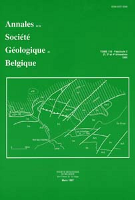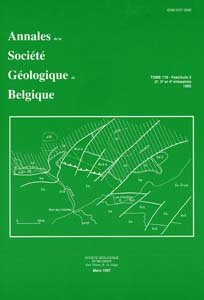- Accueil
- Publications spéciales = special publications
- L'évolution quaternaire des bassins fluviaux de la...
- La Meuse en France et en Belgique
Visualisation(s): 1258 (23 ULiège)
Téléchargement(s): 977 (11 ULiège)
La Meuse en France et en Belgique
Formation du bassin hydrographique - Les terrasses et leurs enseignements

Abstract
I. Formation of the hydrographic net
The main lines of the hydrographic net in the east of the Paris Basin developed on an Oligocene-Miocene erosion surface, according to J. Tricart (1948). The upper Meuse and its major tributaries, the Bar, Moselle and the Meurthe have then a typical dendritic pattern (fig. 2). It is probable that the waters so gathered together did not cross the Ardennes massif but flowed towards the west, not far from its southern boundary. In the Pliocene, captures would have diverted the waters of the Semois and then of the Meuse towards the north (fig. 3), forming a hydrographic axis which crosses the Cambrian massif of Rocroi.
The hydrographic net to the north of the Ardennes watershed was probably formed as the sea receded in the Oligocene and Miocene, apart from the Sambre and the section of the Meuse between Namur and Liège whose origin is still in dispute.
During the Quaternary the Meuse lost the upper part of the Bar and the Moselle as a result of captures (fig. 5).
II. The incision of the Meuse: terraces
Terraces on the Meuse are uncommon in the Paris Basin. J. Tricart (1952) has identified fragments of three alluvial terraces which were laid down during periglacial phases (fig. 6). The Meuse is not incised in this region since the capture of the Moselle and at Mézières, alluvial gravels which contain granite pebbles are at flood-plain level.
Downstream, in the valley of the Meuse and its tributaries (fig. 6 and 7), some ten terrace levels have been recognized.
The terraces of the tributaries of the Meuse generally converge upstream (fig. 7), an arrangement which has been explained by P. Macar (1958) as due to the progressive increase of the river load as it became incised.
Between Mézières and Haybes the terraces of the Meuse do not show any sign of a doming of the massif of Rocroi. Indications of local uplift exist, however, further to the north in the Givet region (fig. 6). To the east of Namur, the terraces show evidence of an uplift which would have tilted all the course of the Meuse downstream of this.
The linking up of the different terrace fragments is done at present on the basis of simple altimetric considerations. It is only in the case of the very low terrace of Wurm age that the recognition of a heavy mineral suite of volcanic origin has confirmed the validity of these correlations.
After a long debate, it now seems probable that the Meuse terraces have a climatic origin. In any case, eight levels seem to have been formed under periglacial conditions.





